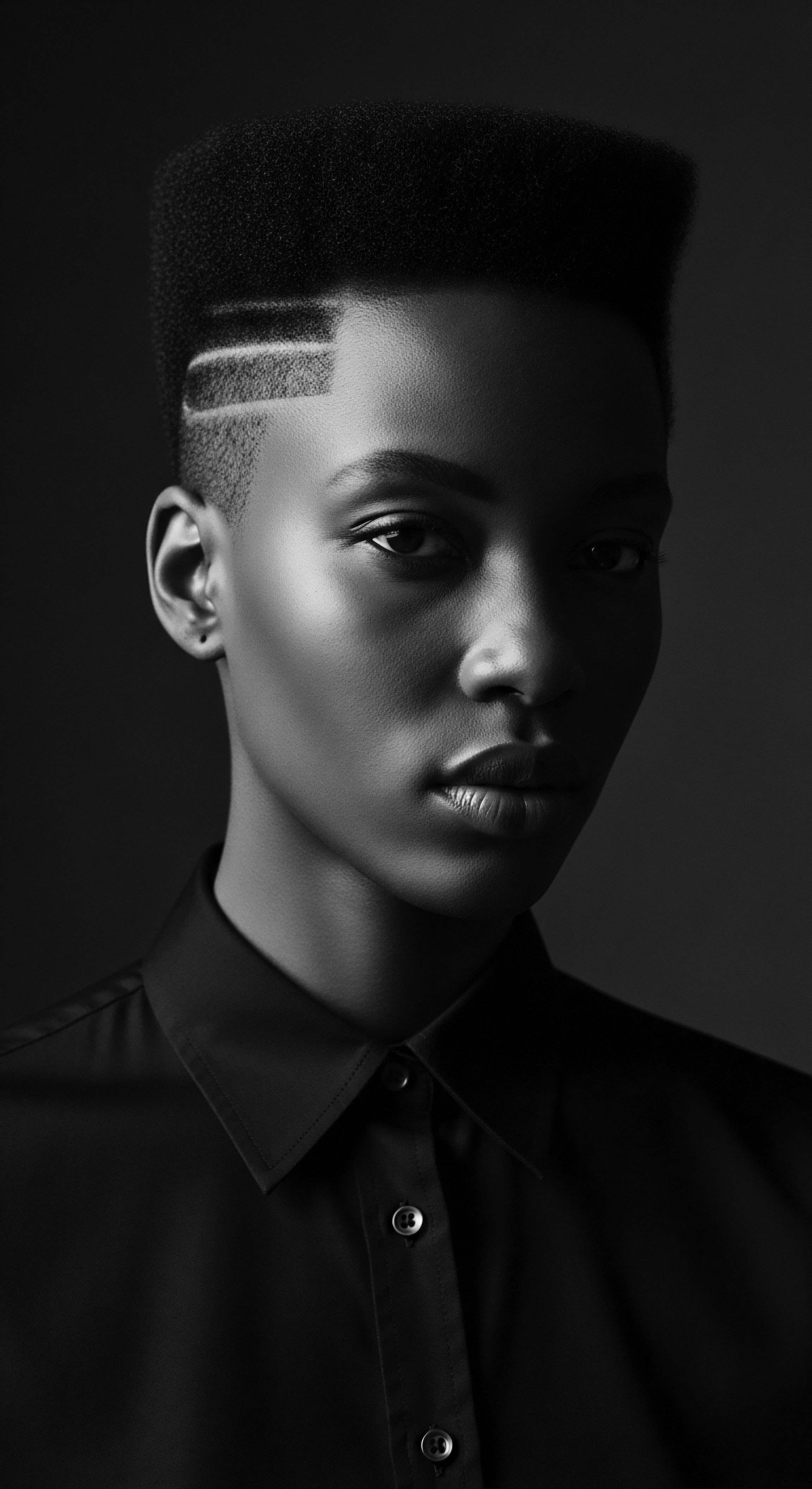
Fundamentals
Within the vibrant lexicon of Roothea’s living library, the concept of Irun Kiko emerges not as a mere term, but as a resonant echo from the very heart of textured hair heritage. It signifies the intrinsic, often unseen, wisdom residing within each strand of textured hair, a wisdom passed down through countless generations. This designation points to the deep, enduring connection between the physical characteristics of hair and the rich cultural tapestry from which it springs. For those new to this profound understanding, Irun Kiko represents the fundamental truth that textured hair is far more than a biological attribute; it is a living archive, holding stories, resilience, and identity within its very structure.
The meaning of Irun Kiko extends beyond simple biology, inviting a contemplation of hair as a carrier of collective memory. It clarifies how ancestral practices, environmental adaptations, and shared experiences have shaped the unique properties of coils, curls, and waves. This initial elucidation serves as a doorway into a world where hair care transcends routine, becoming an act of reverence and continuity. It speaks to the inherent beauty and strength of Black and mixed-race hair, emphasizing that its capabilities are not just scientific phenomena but also cultural legacies.
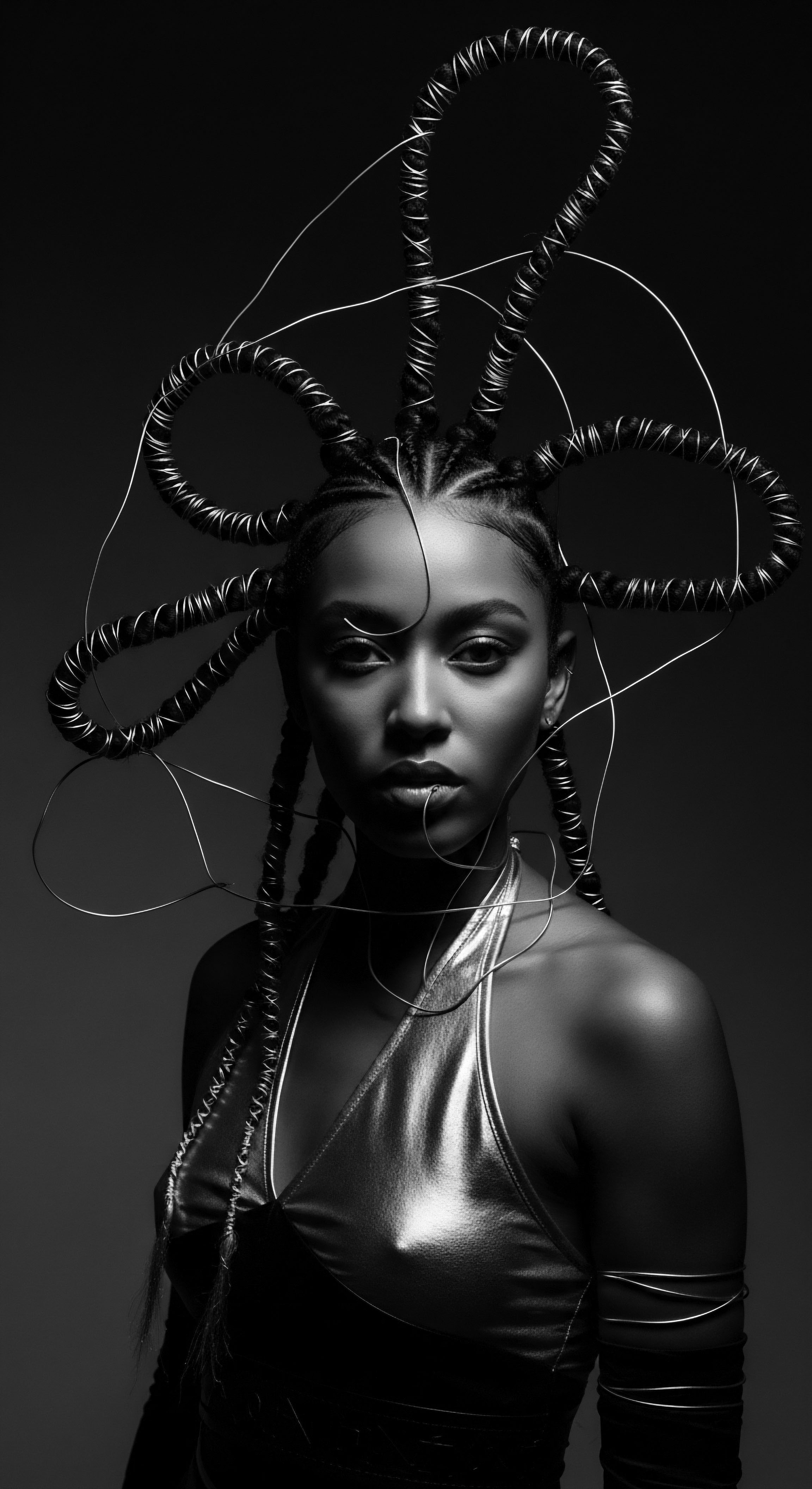
The Ancestral Whisper in Each Strand
Irun Kiko asks us to listen closely to the whispers of history embedded within our hair. It is an acknowledgment that the ways our ancestors tended their hair, the ingredients they used, and the styles they fashioned were not arbitrary acts. These were intentional rituals, deeply entwined with their spiritual beliefs, social structures, and daily existence. The very definition of Irun Kiko begins with this recognition ❉ hair as a conduit for intergenerational knowledge, a silent testament to survival and flourishing.
Irun Kiko is the inherent, living memory encoded within each textured hair strand, a vibrational echo of ancestral wisdom, environmental adaptations, and the collective journey of Black and mixed-race communities.
Consider the simplest acts of hair care – detangling, cleansing, moisturizing. Through the lens of Irun Kiko, these actions gain a deeper sense. They are not merely about maintaining appearance; they are about honoring a lineage of care, a continuous thread connecting us to those who came before. This interpretation of Irun Kiko grounds contemporary practices in a profound historical context, encouraging a more mindful and respectful approach to hair wellness.

Elemental Connections ❉ Hair as Earth’s Echo
The concept of Irun Kiko draws parallels between the earth’s natural formations and the spiraling patterns of textured hair. Just as rivers carve paths and mountains rise in varied contours, so too do hair strands exhibit a diversity of shapes and densities. This connection to the elemental world underscores the natural, organic beauty of textured hair, positioning it as a reflection of nature’s boundless creativity. Understanding Irun Kiko at this foundational level means appreciating the inherent design of each curl, coil, or wave, recognizing it as a gift from the earth itself.
The early understanding of hair in many ancestral communities was rooted in a deep observation of nature. Plants provided remedies, and the rhythms of the seasons guided cultivation and harvest. This ecological awareness directly informed how hair was perceived and cared for, influencing the development of practices that honored its natural state. The designation Irun Kiko, at its most basic, invites a return to this elemental perspective, fostering a deeper reverence for the hair’s natural capabilities and needs.

Intermediate
Building upon the foundational understanding, Irun Kiko at an intermediate level reveals itself as a sophisticated framework for comprehending the interplay between the biological realities of textured hair and its profound socio-cultural significance. This explanation moves beyond a simple acknowledgment of heritage, delving into the specific mechanisms through which hair becomes a living document of history, identity, and collective experience. It clarifies that the unique morphology of textured hair – its ellipticity, the distribution of disulfide bonds, and its propensity for shrinkage – are not merely genetic predispositions but are also the biological imprints of generations adapting, surviving, and expressing themselves.
The meaning of Irun Kiko, when explored at this deeper plane, encompasses the dynamic evolution of hair practices across the Black and mixed-race diaspora. It interprets how ancient African traditions, often rooted in communal rituals and the spiritual reverence for hair, were transformed and preserved amidst forced migrations and oppressive systems. This intermediate delineation offers a more nuanced perspective on how hair, despite efforts to strip it of its dignity, remained a powerful site of resistance and cultural retention. It highlights the ingenuity of communities in adapting available resources and knowledge to maintain practices that honored their hair’s inherent Irun Kiko.
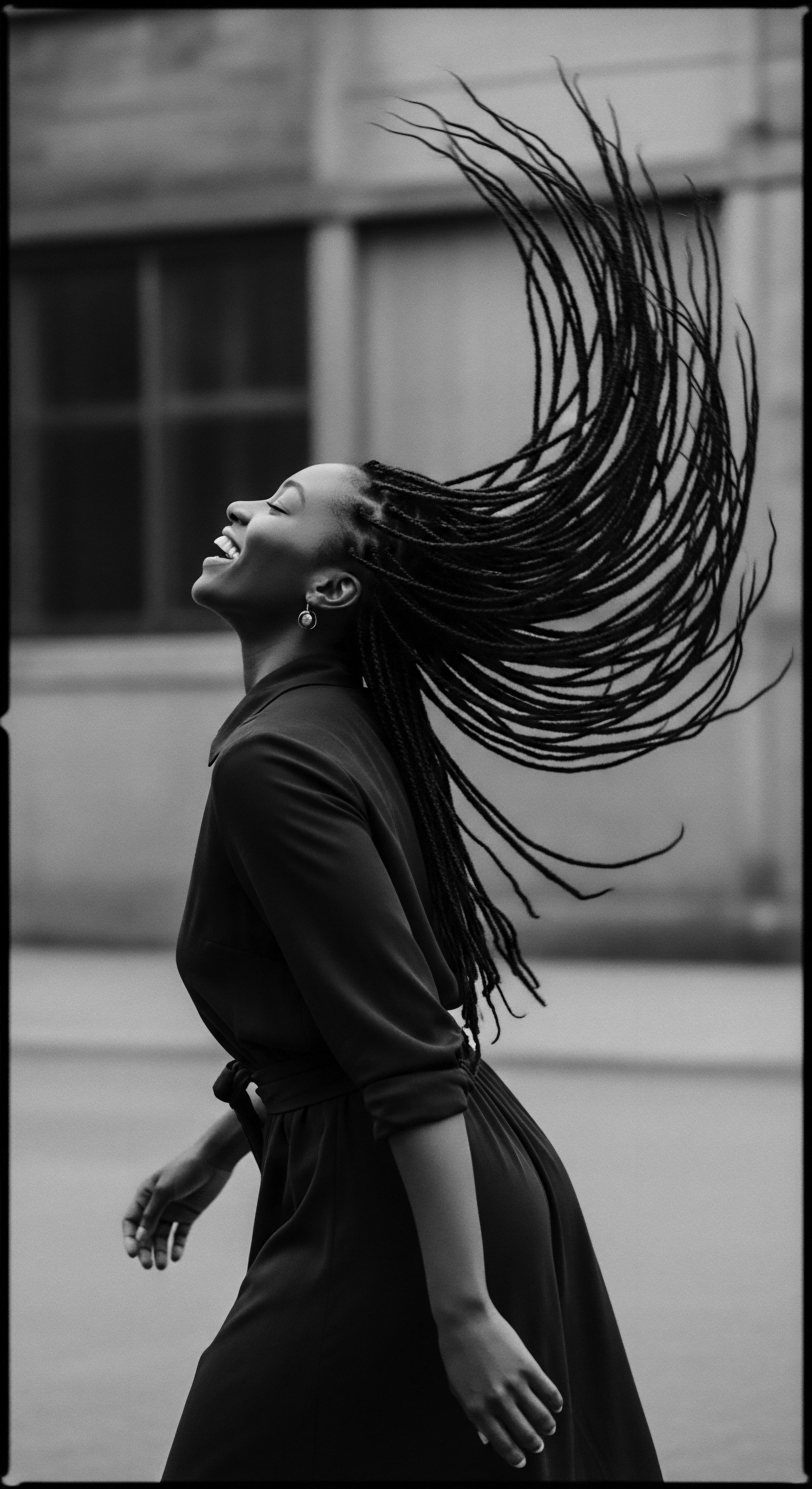
The Tender Thread ❉ Weaving Ancestral Care into Modern Understanding
The concept of Irun Kiko guides us in recognizing how traditional hair care rituals, often passed down through oral traditions and embodied knowledge, carry scientific wisdom. These ancestral practices, developed over centuries, frequently align with contemporary understanding of hair health. For instance, the consistent use of natural oils and butters in many African communities for moisture retention and scalp health finds affirmation in modern trichology, which emphasizes the importance of sealing moisture in porous textured strands. This connection demonstrates how the wisdom of our forebears, often intuitive and experiential, held truths now being rediscovered by scientific inquiry.
A deeper exploration of Irun Kiko compels us to examine the tools and techniques that have shaped textured hair care. From intricately carved combs to the skilled hands that fashioned elaborate protective styles, each element carries a story of adaptation and artistry. The intermediate interpretation of Irun Kiko underscores how these historical innovations continue to influence modern practices, offering valuable lessons in gentle manipulation and holistic hair wellness.
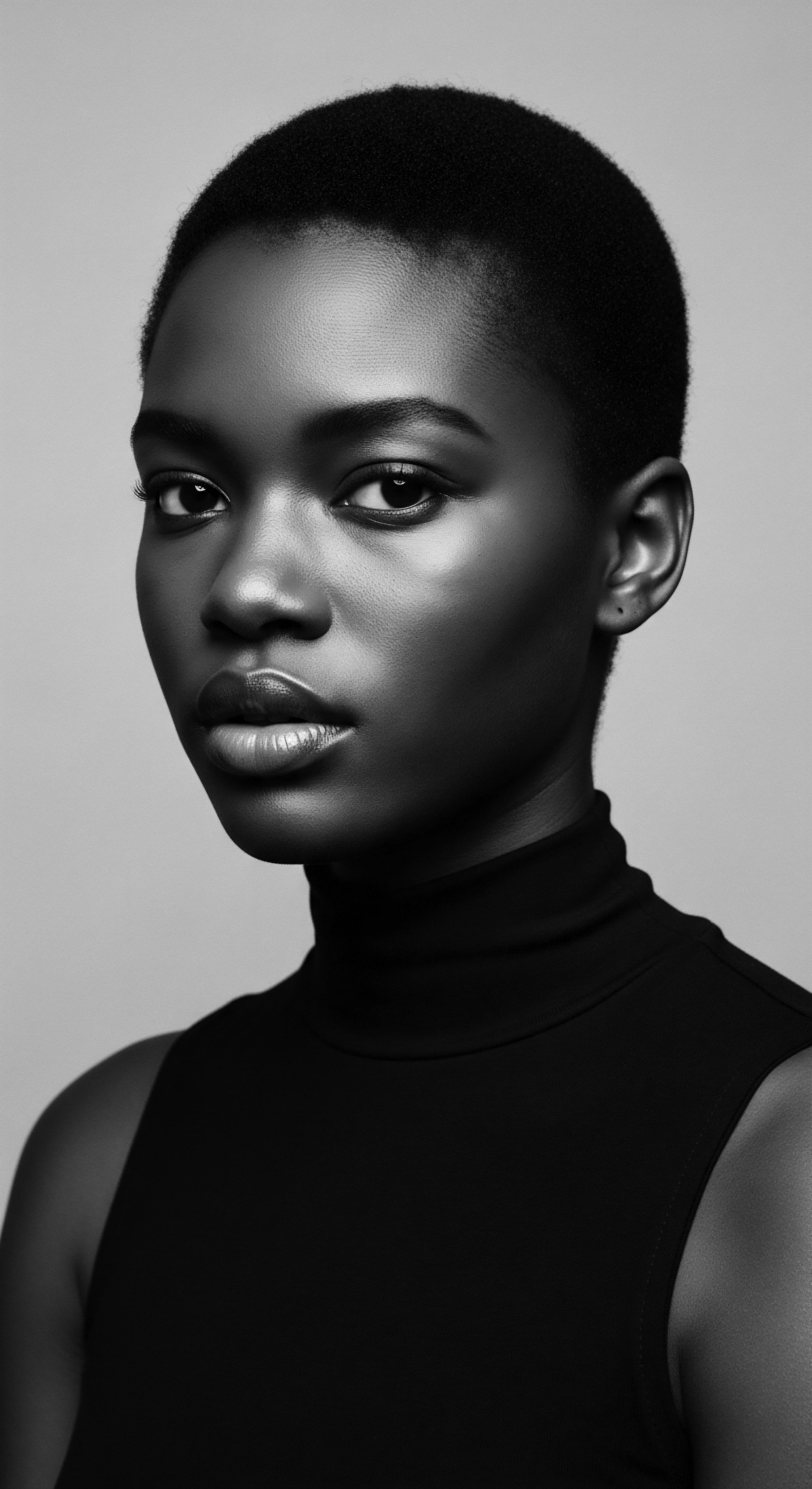
The Living Archive ❉ Hair as a Cultural Chronometer
Hair serves as a powerful cultural chronometer, its styles and treatments reflecting shifts in societal norms, political climates, and expressions of identity. The Irun Kiko reminds us that hair is not static; it responds to its environment, both physical and social. During periods of enslavement, for instance, hair was often forcibly shaved or neglected, yet communities found ways to continue intricate braiding patterns, sometimes embedding seeds or even escape routes within the styles as a form of silent communication and resistance.
(Rosado, 2007). This historical example powerfully illuminates how Irun Kiko, as the living memory of hair, allowed for the continuity of identity and agency even under duress.
Hair, through the lens of Irun Kiko, transforms from a mere biological appendage into a dynamic cultural chronometer, reflecting the resilience and adaptability of Black and mixed-race communities across generations.
The Yoruba people of West Africa, for instance, held a deep reverence for hair, considering the head (Ori) as the seat of a person’s spiritual essence and destiny. Hairdressing was not merely cosmetic; it was a ritualistic act, often performed by skilled artisans, the onidiri, who understood the spiritual significance of each braid and adornment. Specific hairstyles communicated a person’s age, marital status, social standing, and even spiritual affiliations. This profound cultural value attached to hair meant that its care was an act of honoring one’s inner self and one’s connection to the divine.
The Irun Kiko within Yoruba cosmology is inextricably linked to the concept of Ori, emphasizing that the well-being of the hair directly impacts the spiritual and physical harmony of the individual. This understanding underscores the enduring legacy of hair as a sacred link to ancestry, spirituality, and identity across African and African Diaspora cultures.
| Aspect of Care Moisture Retention |
| Ancestral Practice (Pre-Colonial Africa) Application of natural butters (e.g. shea butter), plant oils (e.g. coconut oil), and herbal infusions. |
| Contemporary Approach (Diaspora) Use of leave-in conditioners, deep conditioners, and sealing oils; "LOC" (Liquid, Oil, Cream) method. |
| Aspect of Care Styling & Protection |
| Ancestral Practice (Pre-Colonial Africa) Intricate braiding patterns (e.g. cornrows, Fulani braids), twisting, and Bantu knots for long-term wear and scalp protection. |
| Contemporary Approach (Diaspora) Protective styles (braids, twists, faux locs), wash-and-go methods, and low-manipulation styles. |
| Aspect of Care Tools & Adornments |
| Ancestral Practice (Pre-Colonial Africa) Combs crafted from wood or bone, pins, razors, and adornments like cowrie shells, beads, and feathers. |
| Contemporary Approach (Diaspora) Wide-tooth combs, detangling brushes, satin scarves, and a range of hair accessories. |
| Aspect of Care Communal Aspect |
| Ancestral Practice (Pre-Colonial Africa) Hairdressing as a shared activity, often involving mothers, daughters, and friends, strengthening social bonds and passing down knowledge. |
| Contemporary Approach (Diaspora) Online natural hair communities, shared tutorials, and meet-ups that foster connection and mutual support. |
| Aspect of Care The enduring wisdom of ancestral practices continues to inform and enrich modern textured hair care, underscoring the timeless principles embedded within Irun Kiko. |
The intermediate grasp of Irun Kiko thus bridges the scientific understanding of hair structure with the cultural contexts that have defined its existence. It encourages an appreciation for the historical ingenuity in hair care, revealing how traditional methods were often sophisticated responses to the hair’s inherent needs and a powerful expression of identity.
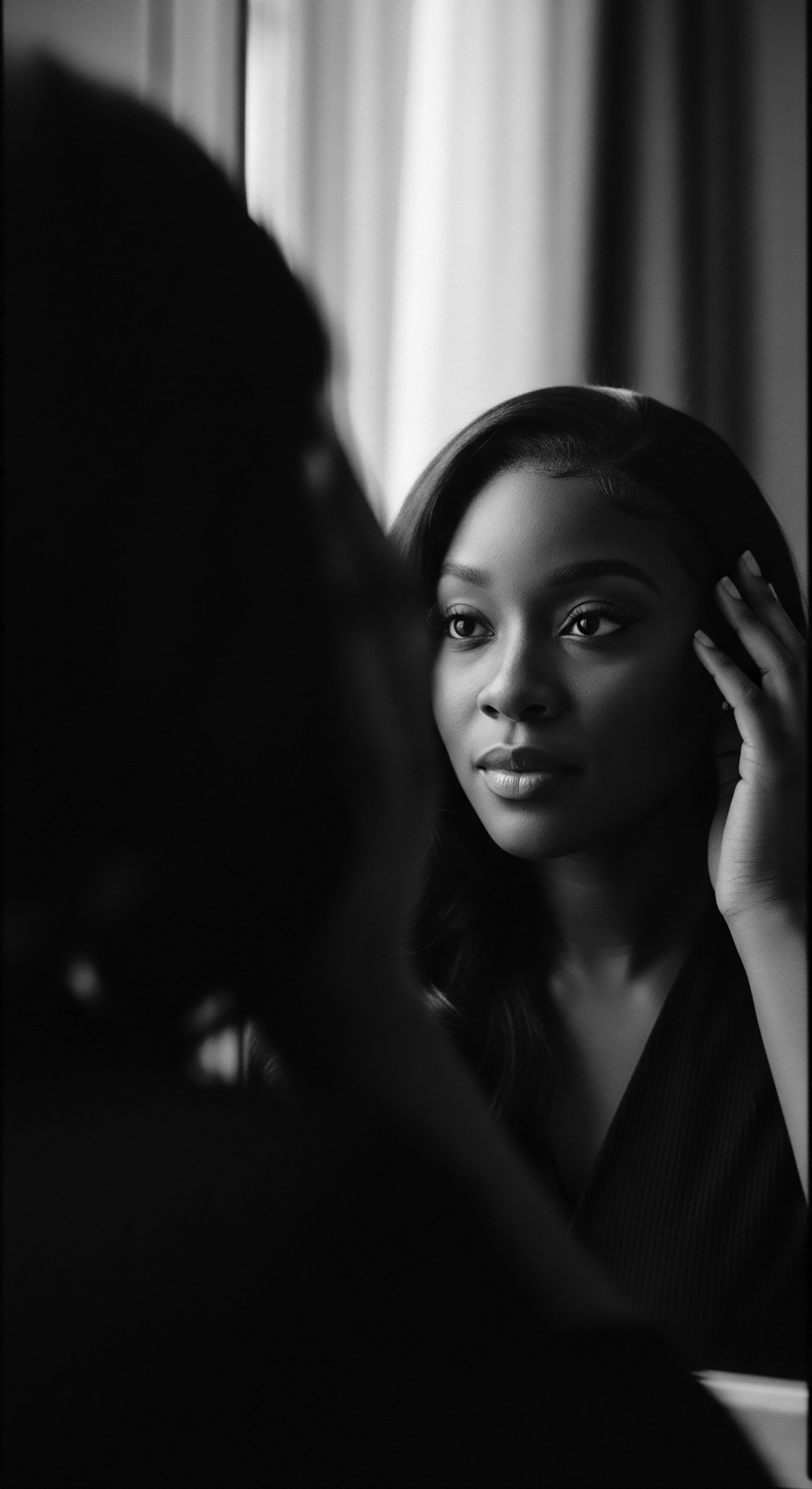
Academic
The academic elucidation of Irun Kiko posits it as a profound conceptual framework within the ethnography of textured hair, designating the bio-cultural resonance embedded within the keratinous structure of hair, reflecting the cumulative epigenetic and experiential adaptations of diasporic populations. This interpretation extends beyond superficial aesthetics, venturing into the very cellular memory of the hair follicle and shaft, proposing that hair carries not only genetic information but also the imprints of historical stressors, nutritional shifts, and the collective socio-cultural practices of Black and mixed-race communities. The meaning of Irun Kiko, at this advanced level, integrates perspectives from molecular biology, cultural anthropology, historical sociology, and even psychoneuroimmunology, arguing for hair as a dynamic bio-semiotic system. It is a statement that hair, particularly textured hair, functions as a tangible, evolving archive of human experience, constantly responding to and registering both internal biological directives and external environmental pressures, including those of cultural oppression and resilience.
This delineation of Irun Kiko scrutinizes the mechanisms by which hair becomes a repository of cultural capital and a medium for non-verbal communication across generations. It suggests that the unique helical structure of textured hair, its distinct patterns of disulfide bonds, and its inherent elasticity are not merely random genetic expressions. Instead, they are interpreted as the physiological manifestations of ancestral adaptation to diverse climates and, crucially, as a physical testament to the enduring practices of care, protection, and symbolic adornment that have been central to survival and identity formation in Black diasporic communities. The explication of Irun Kiko at this academic stratum demands a critical examination of how historical beauty standards, often imposed through colonial and post-colonial lenses, have attempted to devalue this intrinsic bio-cultural wealth, yet how, through acts of reclamation, textured hair continues to assert its inherent worth and ancestral connection.

Echoes from the Source ❉ The Epigenetic Landscape of Textured Hair
The foundational understanding of Irun Kiko begins with its biological underpinnings, considering the hair follicle as a highly sensitive organ, capable of responding to a myriad of internal and external stimuli. Research in epigenetics, the study of heritable changes in gene expression that do not involve changes to the underlying DNA sequence, offers a compelling lens through which to comprehend the deeper meaning of Irun Kiko. While direct evidence of epigenetic markers specifically linked to cultural practices in hair structure is an emerging field, the concept posits that prolonged environmental exposures, including stress, diet, and even the chemical treatments historically applied to hair, could theoretically influence gene expression patterns that subtly alter hair morphology or its growth cycle over generations. This hypothesis invites a re-evaluation of hair’s biological blueprint, suggesting it is not a fixed inheritance but a responsive, evolving script.
The distinct elliptical cross-section and varying degrees of curl in textured hair are well-documented biological phenomena. Irun Kiko prompts an inquiry into how these characteristics might have been shaped not only by natural selection in diverse African climates but also by the sustained, communal practices of care that favored certain hair qualities. For instance, the use of protective styles, deeply ingrained in ancestral traditions, would have minimized breakage and preserved hair length, thereby inadvertently favoring the propagation of hair types that responded well to such nurturing methods. This nuanced perspective on hair biology acknowledges the agency of human cultural practices in shaping what we perceive as natural hair traits.
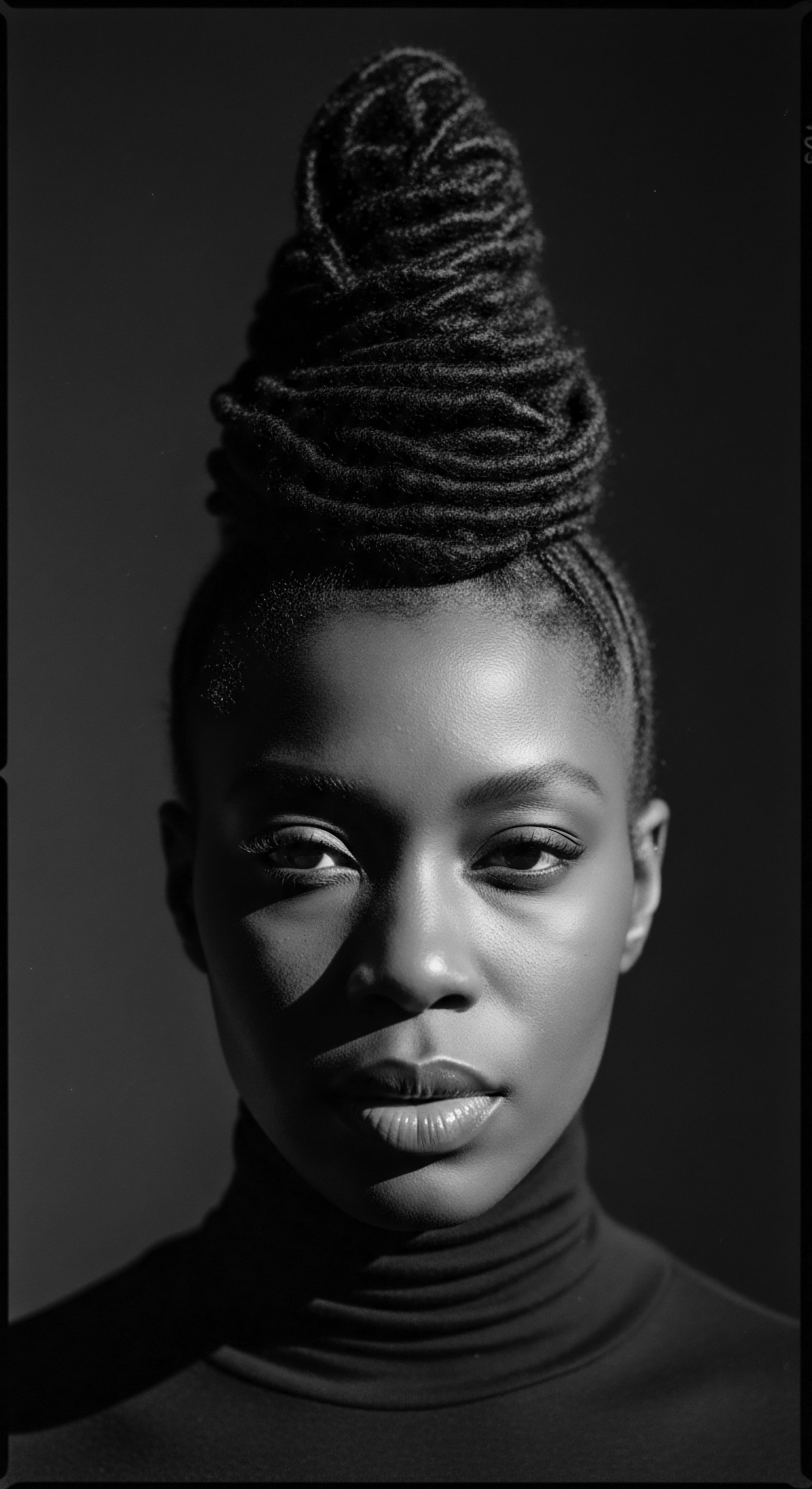
The Tender Thread ❉ Hair as a Communicative Medium and Site of Resistance
The academic lens on Irun Kiko deepens the understanding of hair as a complex system of communication, a ‘grammar of hair’ as articulated by scholars like Sybil Rosado (2007). Rosado’s work highlights how hair textures and styles among women of African descent carry symbolic meanings, serving as a means of group identity formation and cultural transmission across the diaspora. The intricate patterns of braids, the deliberate choice of styling, or the adornment with specific objects were not merely aesthetic decisions.
They were imbued with layered meanings, conveying social status, marital availability, tribal affiliation, and even spiritual beliefs. During periods of immense adversity, such as the transatlantic slave trade, the intentional preservation and adaptation of these hair practices became a powerful, covert act of resistance against dehumanization and cultural erasure.
Irun Kiko underscores hair’s profound role as a living lexicon, where ancestral practices and styling choices served as a silent yet potent language of identity, resilience, and resistance throughout the Black diaspora.
Consider the historical instance of enslaved Africans who, stripped of their material possessions and often forced to shave their heads upon arrival in the Americas, ingeniously found ways to retain and reinvent their hair traditions. The act of braiding, for example, became a clandestine art form. Beyond its functional role in managing hair, specific braiding patterns were rumored to have been used to map escape routes or conceal seeds for future cultivation, thus transforming hair into a literal tool for survival and continuity.
This profound historical context reveals Irun Kiko as the embodied knowledge that allowed communities to sustain their cultural memory and identity through the very fibers of their being. The politicization of Black hair, as seen in the Civil Rights Movement with the rise of the Afro, further demonstrates how hair became a visible statement of Black pride and a rejection of Eurocentric beauty standards, asserting the inherent Irun Kiko of natural textures.
- Oral Traditions ❉ The transmission of hair care knowledge and styling techniques was predominantly oral, passed from elder to youth, mother to daughter. This embodied pedagogy ensured the continuity of specific practices and the cultural meanings attached to them, preserving the Irun Kiko across generations.
- Material Culture ❉ The adaptation of available natural resources for hair care, such as shea butter, coconut oil, and various herbs, demonstrates an enduring ethnobotanical wisdom. These traditional remedies often provided essential nutrients and protective barriers for textured hair, a testament to ancestral scientific observation.
- Social Bonding ❉ Hairdressing was often a communal activity, fostering social cohesion and intergenerational connection. These moments of shared intimacy reinforced community bonds and served as informal educational settings for transmitting cultural values and hair care philosophies, nurturing the Irun Kiko of the collective.

The Unbound Helix ❉ Hair, Identity, and the Future of Ancestral Wellness
The academic inquiry into Irun Kiko also extends to its contemporary relevance, particularly within the ongoing natural hair movement. This movement, often facilitated by digital platforms, serves as a modern manifestation of ancestral communal practices, providing spaces for shared knowledge, mutual support, and the celebration of diverse textured hair types. The reclamation of natural hair is not merely a stylistic choice; it is a profound act of self-acceptance, a decolonization of beauty standards, and a reconnection to a rich ancestral lineage. It is a conscious recognition and celebration of the Irun Kiko inherent in one’s own hair.
The future implications of understanding Irun Kiko are vast. It encourages a holistic approach to hair wellness that respects both scientific advancements and ancestral wisdom. This includes exploring traditional plant-based remedies with modern scientific rigor, acknowledging the synergistic effects of natural ingredients that have long been part of indigenous hair care pharmacopoeias.
It also involves advocating for policies that protect individuals from hair discrimination, recognizing that such discrimination is a continuation of historical efforts to suppress cultural identity linked to textured hair. The concept of Irun Kiko provides a robust framework for understanding the deep historical and cultural roots of textured hair, positioning it as a vital component of identity, well-being, and collective memory for Black and mixed-race individuals worldwide.
The scholarly pursuit of Irun Kiko challenges prevailing Eurocentric beauty norms by centering the experiences and knowledge systems of African and diasporic communities. It proposes that the resilience of textured hair, its ability to withstand diverse styling manipulations, and its natural beauty are inherent qualities that have been historically undervalued. This perspective calls for a re-evaluation of hair science itself, urging it to incorporate indigenous epistemologies and to recognize the profound wisdom embedded in ancestral hair care practices. The Irun Kiko thus serves as a powerful call to acknowledge hair not as a mere biological structure, but as a dynamic cultural artifact, a living testament to heritage, and a continuous source of strength and identity.

Reflection on the Heritage of Irun Kiko
As we draw our contemplation of Irun Kiko to a close, we are left with a resonant sense of its enduring significance within the grand tapestry of textured hair. This exploration has traversed the delicate pathways from elemental biology to the profound depths of ancestral practices, revealing hair not merely as a biological attribute but as a living, breathing testament to heritage. The Irun Kiko, in its very essence, is the soul of a strand, a silent chronicler of triumphs, adaptations, and unwavering identity across generations. It reminds us that every coil, every curl, every wave carries within it the echoes of ancient rhythms, the whispers of resilience from those who walked before us.
The journey of understanding Irun Kiko is a continuous act of homecoming, a return to the inherent wisdom that has always resided within Black and mixed-race hair. It encourages us to look beyond fleeting trends and imposed standards, inviting a deep reverence for the hair’s natural capabilities and its profound connection to ancestral roots. This concept challenges us to perceive hair care as a sacred ritual, a mindful dialogue with our past, and a purposeful shaping of our future. It is a celebration of the ingenuity, beauty, and strength that have always defined textured hair, a heritage preserved and cherished through generations of dedicated care and unwavering spirit.
The unfolding narrative of Irun Kiko is a powerful reminder that our hair is a vibrant extension of our collective story, a symbol of unbroken lineage. It stands as a beacon of cultural pride, inspiring a renewed appreciation for the diverse forms and textures that embody the richness of Black and mixed-race identities. This concept, therefore, is not a static definition but a dynamic invitation to engage with our hair as a source of ancestral wisdom, personal empowerment, and communal connection, ensuring that the legacy of textured hair heritage continues to flourish with vibrant life.

References
- Adeyemi, O. (2018). The Spiritual Significance of Hair in Yoruba Culture. Journal of African Cultural Studies.
- Byrd, A. D. & Tharps, L. (2014). Hair Story ❉ Untangling the Roots of Black Hair in America. St. Martin’s Griffin.
- Nyela, O. (2021). Braided Archives ❉ Black hair as a site of diasporic transindividuation. York University.
- Rosado, S. D. (2007). Nappy Hair in the Diaspora ❉ Exploring the Cultural Politics of Hair Among Women of African Descent. University of Florida.
- Thompson, A. (2009). Black Women and the Politics of Hair. Palgrave Macmillan.
- Goodenough, W. H. (1981). Culture, Language, and Society. Benjamin/Cummings Publishing Company.
- Ladele, L. A. & Lasebikan, M. (1986). Yoruba Customs and Traditions. University Press Limited.
- Idowu, E. B. (1995). Olódùmarè ❉ God in Yoruba Belief. Longman.
- Euba, F. (1985). Archaeology of the Yoruba. Heinemann Educational Books.
- Akintola, O. (2022). Decolonizing African Knowledge ❉ Autoethnography and African Epistemologies. Cambridge University Press.
- Oforiwa, A. (2023). The History and Culture of African Natural Hair ❉ From Ancient Times to Modern Trends. AMAKA Studio.
- Muse, S. (2020). Roots of African American Herbalism ❉ Herbal Use by Enslaved Africans. Herbal Academy.
- Olupona, J. K. (2013). African Religions ❉ A Very Short Introduction. Oxford University Press.
- Ogbonna, C. N. (2016). The Symbolism and Communicative Contents of Dreadlocks in Yorubaland. LAP Lambert Academic Publishing.
- Mabona, M. M. (2024). Cosmetopoeia of African Plants in Hair Treatment and Care ❉ Topical Nutrition and the Antidiabetic Connection?. MDPI.
